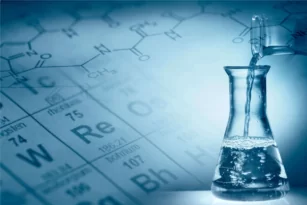The quality or performance of electrical insulating oil is dictated by its chemical structure. Chemical structure determines the consistency of its viscosity performance, it resistance to oxidation (longevity of performance) and its compatibility with other materials.
In addition to chemistry, the purity (moisture content and impurities) of the oil also influences many of the oil properties including resistivity and dielectric properties. The quality or purity of transformer oil is generally controlled by the refining and post-refining handling processes, whereas the basic chemical structure is determined primarily by the source of raw material to the refining process.
Re-refining processes have been developed to produce new transformer oil from used transformer oil feedstock. It is generally accepted that naphthenic crude oils are declining in ready availability and that the current primary reserves becoming more difficult to refine. There is however a substantial reserve of high quality naphthenic oil in service throughout the global power industry and it is this raw material that re-refiners recover.
Understanding how re-refining processes work requires a basic understanding of how the chemical structure of a mineral transformer oil determines its characteristics, what happens in the ageing/oxidation process for transformer oils and how thee re-refining process reverses the oxidation process.
Such processes refine used or oxidised or contaminated transformer oils to produce new high quality inhibited transformer oil with excellent oxidation stability characteristics, low corrosive sulphur and excellent electrical and insulating properties. All these outcomes are achieved while at the same time reducing carbon emissions from the production and use of electrical insulating oils.
Some of the key characteristics of transformer oil can be explained in terms of the chemical structure of the oil. For example:
- High resistivity/low conductivity is related to the relatively consistent non-polar structure of well refined hydrocarbon oil. Not only is the oil itself non conducting but when in a well refined and clean state it will also hold very little moisture which in turn assists in maintaining good resistivity, dielectric strength and high breakdown voltage.
- Mineral transformer oil is normally predominantly naphthenic in structure but also contains substantial paraffinic character and some aromatic character. Typically in the order 45-50% naphthenic, 5% aromatic and the balance paraffinic. This structure is compatible with that of Kraft paper which has a complex polyphenolic structure that contains substantial aromatic and paraffinic elements.
- The naphthenic component of transformer oil is fundamental to the stable viscosity characteristic of the oil. The cyclic nature of the naphthenic component of the oil resists waxing at low temperatures and maintains stability at higher temperatures. Naphthenic mineral oils are the ideal oil for electrical insulation oil purposes.
- Hydrocarbon oils contain a mixture of single and multiple carbon-carbon bonds. The more single bonds in the oil the more saturated with hydrogen the oil molecule. More saturated oil molecules are less prone to oxidation than less saturated oil molecules.





